#japanese prehistory
Text

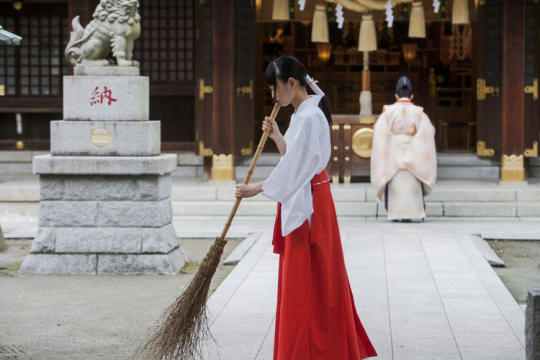


Sean bienvenidos mis queridos fanáticosarqueológicos a una nueva entrega de prehistoria Japónesa en esta ocasión nos trasladamos a la pregunta ¿Cuándo se originó el sintoísmo?.
-
Aunque parezca raro es una religión que se conformo durante el periódo Jōmon (17.500-300), para ser exactos a finales de dicho período y continua hasta nuestros días los dioses del sintoísmo, se les llama Kamis ( dios) ya que para los japoneses todo tenía un dios las montañas, ríos.
-
El sintoísmo tiene influencias chinas, coreanas de hay que tenga similitudes con el taoísmo, ¿Qué dos libros recogen la categoría de los Kamis? Son el Kojiki(713d.c) y el Nihonshoki(720d.c).
-
Espero que os guste y nos vemos en una próxima públicacion un cordial saludo.
🇯🇵
私の愛する考古学ファンを日本の先史時代の新作に歓迎します。今回は、神道がいつ始まったのかという質問に移ります。
-
奇妙に思えるかもしれませんが、縄文時代(17500-300)に形成された宗教であり、正確にはその時代の終わりに、今日まで神道の神であり、カミス(神)と呼ばれています。 日本人にとって、山や川にはすべて神がいました。
-
神道は中国、韓国の影響を受けており、道教との類似点があります。 カミスのカテゴリーに分類される2冊の本は何ですか? こうじき(713d.c)と日本書紀(720d.c)です。
-
よろしくお願いします。次の出版物で心からのご挨拶を申し上げます。
🇬🇧
Welcome my dear archaeological fans to a new installment of Japanese prehistory, this time we move to the question, when did Shintoism originate?
-
Although it may seem strange, it is a religion that was formed during the Jōmon period (17500-300), to be exact at the end of that period and continues to this day the gods of Shintoism, they are called Kamis (god) since for the Japanese everything the mountains and rivers had a god.
-
Shintoism has Chinese, Korean influences, and there are similarities with Taoism. What two books are classified under the category of the Kamis? They are the Kojiki (713d.c) and the Nihonshoki (720d.c).
-
I hope you like it and see you in a next publication a cordial greeting.
#kamis#kami#japanese gods#history#japan#jōmon#jōmon period#prehistory#japanese prehistory#taoism#china#korea#religious history#kojiki#Nihonshoki#カミス#カミ#日本の神々#歴史#日本#城門#ピリオドジョモン#先史時代#先史時代日本人#道教#中国#韓国#ヒストリアレリギオーザ#コジキ#日本書紀
88 notes
·
View notes
Text
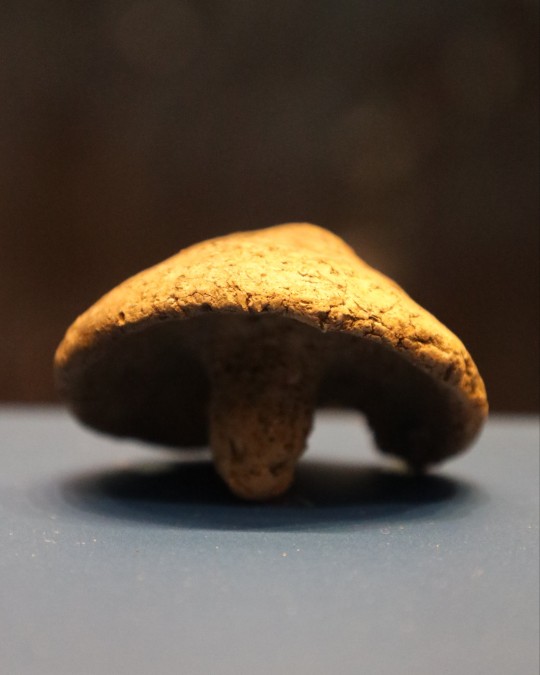
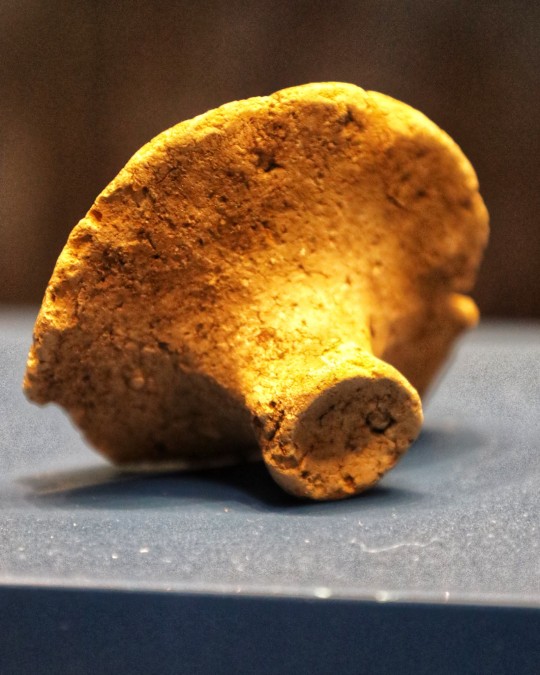
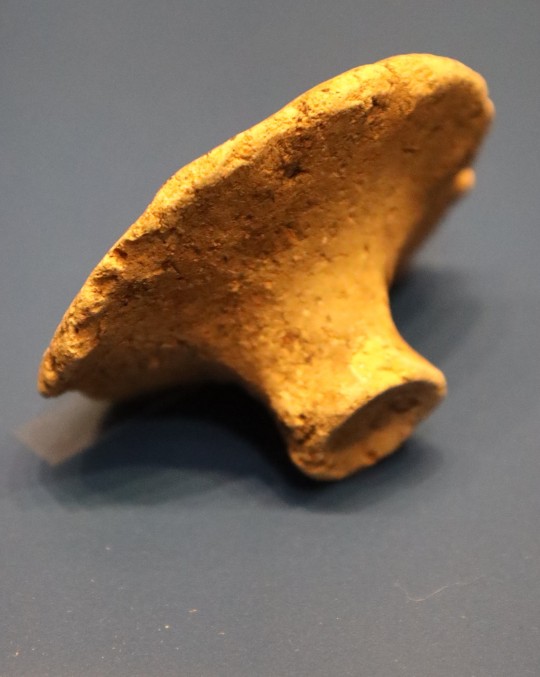

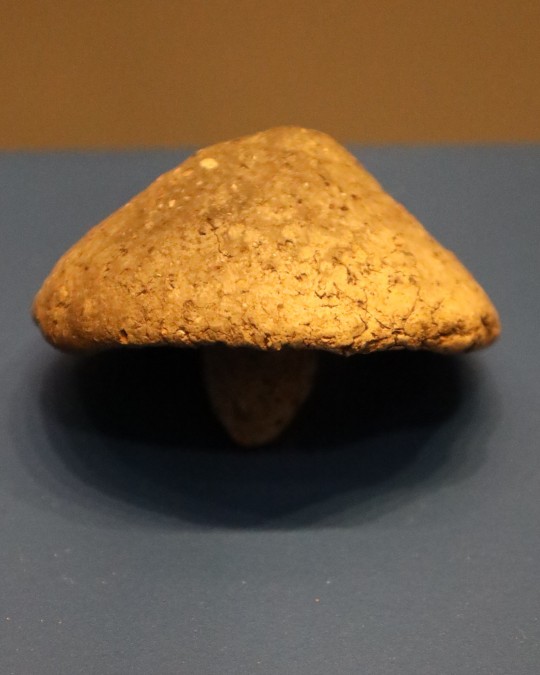

Middle Jomon Miniature Pottery Mushrooms, 5000 years old, 'Circles of Stone: Stonehenge and Prehistoric Japan' Exhibition, Stonehenge Visitor Centre, Wiltshire
#mushrooms#prehistory#prehistoric#pottery#pottery fragment#ancient living#ancient craft#ancient cultures#Japan#Japanese culture#archaeology#relic#nature#fungi#votive
965 notes
·
View notes
Text

Ornamented pottery in the "Fire Flame" style, dating to the Middle Jomon period (ca. 2500-1500 BCE). Found at Sasayama, Niigata Prefecture, Japan; now in the Tokyo National Museum.
#art#art history#ancient art#prehistoric art#prehistory#Japan#Japanese art#East Asia#East Asian art#Jomon#Jomon period#pottery#ceramics#Tokyo National Museum
618 notes
·
View notes
Text
youtube
#youtube#japanese#japan#history#japaneseculture#culture#prehistory#stoneage#paleolithic#paleolithicjapan#japanesehistory
2 notes
·
View notes
Video
youtube
Dōtaku, ancient bells from Japan, Jan 7, 2023
Dōtaku (bell-shaped bronze, national treasure), 1st–2nd century B.C.E., bronze, found in Kagawa Prefecture, 42.7 cm high (Tokyo National Museum)
Speakers: Dr. Steven Zucker and Dr. Beth Harris
Smarthistory
#dotaku#bells#metal#art history#art#sculpture#relief#bronze#prehistory#Yayoi period#Japanese#smarthistory
2 notes
·
View notes
Text
#japan#japanese history#history of japan#jomon#jomon period#yayoi period#kofun#kofun period#ancient japan#east asia#japanese people#history#human history#world history#i love japan#prehistory#prehistoric#history geek
0 notes
Text

Cube ultimate weapon get! Not done yet though. Euraokos, here I come!
(Original upload date: October 21, 2022)
#it's supposed to be erauqs#because it's square backwards#they kinda botched it#live a live#rosie plays live a live#yeah this is one where i kinda agree the localisation messed up#this and pogo's first word#though in the latter case i knew enough japanese to understand that he's actually saying “ai” which means love#because prehistory utilises non-dubbed grunts in japanese#also fun fact zaki is voiced by captain falcon#knew i recognised the name ryo horikawa somewhere#anyway moving on#shut up rosie
1 note
·
View note
Text
Misunderstanding
I received a note from someone who was upset I “failed to cite Scott McCloud’s Understanding Comics” in my research for my work on Neil Gaiman's Chivalry and the essays I wrote about it.
I really appreciate that people want to make sure credit goes where it's due, and I have a lot of respect for Scott McCloud's accomplishment with his wonderful book.
I haven't read it myself in some years, and didn't cite it in my articles because I didn't reference it. I don't even know where my copy is so I don't know what McCloud referenced, either.
The information in my articles re: illuminated manuscripts and the Bayeux Tapestry, as well as other theories about the development of sequential art from prehistory, not only predate McCloud's work (and in fact, predate McCloud's birth,) but they are so common and so well known in comics circles that asking me to cite them seems as weird to me as asking me to cite the information that George Washington was the first President of the United States.
A part of me wonders if someone is trying to play, "Let's you and him fight."
No.
But I’m happy to bring to your attention some reading material.
Stephen Becker in his 1959 work Comic Art in America: A Social History of the Funnies, the Political Cartoons, Magazine Humor, Sporting Cartoons, and Animated Cartoons was among the first to discuss the Bayeux Tapestry as comic art. I read that book sometime in the 1980’s. I think a lot of people assume the Bayeux tapestry as comic art was McCloud’s idea, but we don’t all walk around with a reference library in our heads, so there you go. I can’t find my copy of Becker’s work to quote, but I did find an article by Arthur Asa Berger with a mention of the Bayeux Tapestry as comic art in the summer 1978 issue of The Wilson Quarterly.

My first exposure to the idea of comics as descendant of fine art was Maurice Horn’s 1976 The World Encyclopedia of Comics which was my first read re: comics history. I still have my tattered 1976 edition.
While Horn scorned the idea that tapestries and manuscripts could be comic art (see, it was a matter of discussion way back then, so much so that authors were writing snarky asides to one another about it,) he believed the origin of sequential art was in the Renaissance sketches of Leonardo da Vinci - which I think everyone now agrees is kind of a bonkers idea.

I think Horn was just intent on elevating the comic art form by hooking up with da Vinci.
You go, boi.
Comics as descendant of art on scrolls is a very common theory, the easiest to trace being in Manga! Manga! The World of Japanese Comics by Fred Schodt published in 1983 when I was still a teenager. I can't find my copy to show examples, but this text is still in print and you can go read it for yourself.
I was introduced to manga by cartoonist Leslie Sternbergh and bought Schodt’s book at Books Kinokuniya on (I think) a trip to New York around the time of first publication of Schodt’s work. And years later took a trip to Japan with Fred Schodt and a group of cartoonists including Jeff Smith and Jules Fieffer, Nicole Hollander, and Denys Cowan as the guests of Tezuka Productions.
Here we all are.

So, I’m familiar with manga, see.
As for comics as descendant of cave paintings, hieroglyphics and ancient art in general, Will Eisner’s 1985 Comics and Sequential Art not only made all of those points, but made those points with comic art examples. Like these.

And this.

And this.
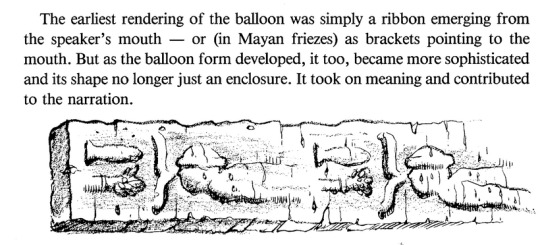
And more than a few words on this:


I find it amusing that someone is questioning why I didn’t cite McCloud when what you should probably be questioning is why more people don’t cite Eisner who produced his book eight years before McCloud published his and who is well known to have influenced McCloud.
Whatever. My book's autographed.
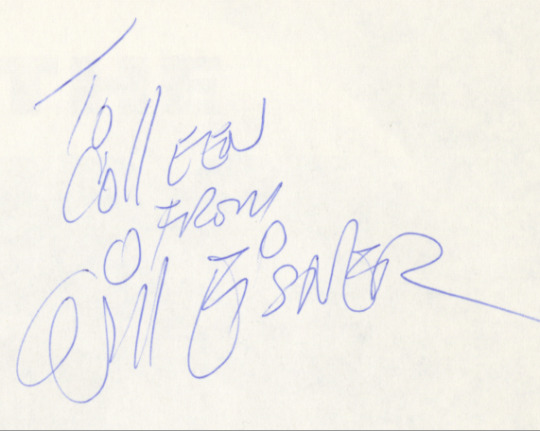
I also danced with Eisner. Eat your heart out.
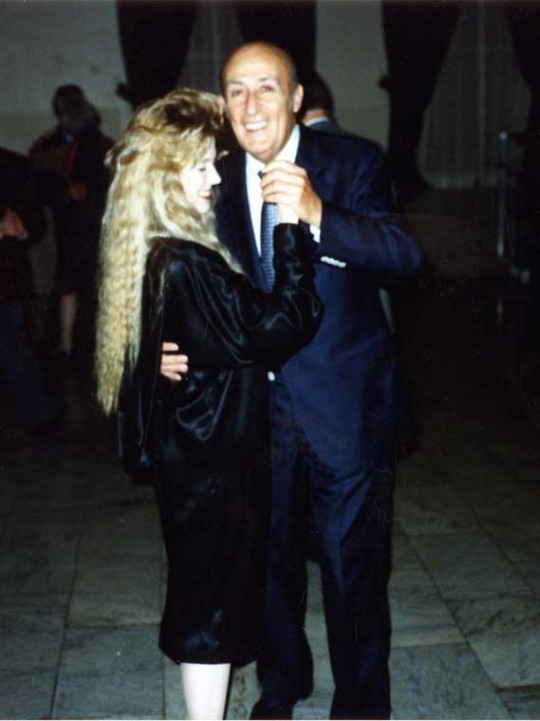
Understanding Comics is a terrific work with huge advantages over every book (that I know of) about comics that came before: it taught comics entirely in the language of comics.
But the discussion in it about the origins of comics and my work especially re: illuminated manuscripts/tapestries, did not originate with McCloud. I research illuminated manuscripts because it’s my hobby and it informs my art.
I encourage everyone to read Understanding Comics because it is an outstanding work.
But it’s not the book that introduced me to the concepts of the development of comic art. It’s not even the point of origin of those concepts. So, there is no reason to cite it.
Also, shocking as it may seem, I occasionally come up with ideas on my own. While I'm younger than McCloud, I've actually been a comics pro longer than he has. So I've had plenty of opportunity to, you know, read things and toss things around, and decide for myself.
When I first read Chivalry and first begged Neil Gaiman to let me adapt it, my head full of the work of Alberto Sangorski and his art for Tennyson’s Le Morte D’Arthur, Understanding Comics hadn’t been published yet.
It's been a good twelve years since I last read McCloud's work, and I don't think I've spoken to him five times in the last three decades. But I'm pretty sure he never mentioned Sangorski.
I hope that clears everything up, and maybe introduces some of you to some works you might not be aware of.
Have a great day.
#understanding comics#comics history#neil gaiman#scott mccloud#chivalry#jules fieffer#tezuka productions#manga#will eisner
2K notes
·
View notes
Text

17th Century Samurai Sword Discovered in Berlin
Archaeologists from the Berlin State Office for Monument Preservation have uncovered a 17th century samurai sword during excavations in Berlin, Germany.
The sword has been identified as a Wakizashi, a 17th century short sword worn by the samurai in feudal Japan.
Wakizashi were generally used as a backup or auxiliary sword for close quarters fighting, and when worn together with a Katana, the pair of swords were called daishō, which translates literally as “big-little”.
Wakizashi were also used to commit seppuku, an act of ritualistic suicide by disembowelment, performed to prevent being captured, as a form of capital punishment for serious offences, or to atone for personal disgrace.
The sword was uncovered during excavations of 20th-century cellars in the Molkenmarkt area, specifically on Stralauer Strasse. This narrow street, once lined with houses and commercial buildings, was heavily damaged by bombing during World War II.
Archaeologists found several cellars filled with war related rubble that was discarded during the final stages of the Battle of Berlin. This includes bridles, stirrups, harnesses, and various artillery militaria, in addition to the heavily corroded Wakizashi.

Upon closer examination by the Museum of Prehistory and Early History, conservators found traces of wood and a wrapping of textiles on the handle still preserved.
The researchers also identified the motif of the Daikokuten on the ferrule, a syncretic Japanese deity of fortune, wealth, the household, agriculture, fertility, sexuality and war. In Japanese mythology, the Daikokuten was also one of the Seven Lucky gods or Seven gods of Fortune.
According to a press statement by the State Museums of Berlin: “Melted decorations of chrysanthemum and waterline motifs were also found on the guard. Based on the motifs and style, the handle could be dated to the Edo period (17th to 19th century AD).”
How the Wakizashi came to be found in a Berlin basement is speculated, however, the researchers suggest it may have been a gift from the Takenouchi Mission in 1862 or the Iwakura Mission between 1871 and 1873.
By Mark Milligan.

#17th Century Samurai Sword Discovered in Berlin#samurai#wakizashi#17th century short sword#antique#ancient artifacts#archeology#archeolgst#history#history news#japanese history
31 notes
·
View notes
Text

For this paradox I was inspired by the sea scorpions of prehistory, and although I thought of using onis inspirations as its name in Japanese but I was not convinced so I went to the basics
#digitalart#digital drawing#digital#digital art#pokemon#fakemon#paradox#paradox pokemon#paradoxpokemon#drapion#drapion pokemon#sea scorpion#prehistoric#pokemon scarlet and violet
107 notes
·
View notes
Text
7月27號 Day 16: Day in Taitung!
Today I decided to wake up around 6:30am. After getting ready, I went to breakfast around 7:15am and I was the only person in the entire room. The hotel breakfast room was giant and could probably seat almost 200 people yet I was the only one there. There was even a lot of food there that was prepared really nicely and I was the only one eating it. After a while some of my friends walked in, but no strangers. The county we are in is known for having the least amount of people. We are staying in a hotel that has 2 buildings and 15 floors for rooms. Since the hotel was so big I was expecting there to be more people at breakfast. But after breakfast, I went back upstairs and noticed something that I noticed in the last hotel. A lot of the electricity around the hotel was off. Like the central AC seemed to be off because the hallways and laundry room were hot. Then I went to the room balcony and every room that I could see had the AC unit off. So I don’t think there were many people staying in this hotel. So they turn the electricity off to save money.
We loaded up on the bus at 9:30 and our first stop was to the rice school museum. It was a small place with not that much going on but it was cool to see how the different types of rice are made and the different stages of rice. Peter also bought us snacks to try. He bought apple mochi and dried squid. The squid was really good. Then we made a quick stop at the “green tunnel” which was just a nice canopy of trees. As we drove through the green tunnel there were some graves which were very detailed. Then we continued on our way to get hot pot on Peter(such a great guy)! It was really good and he even ordered an extra plate of beef for our table. After eating hotpot, we went to the national museum of prehistory. I learned and saw so many different things. It was one of the best museums we have been to in my opinion. Especially since everything was in chronological order. It was amazing to see how things advanced and some things remained the same.
After leaving the museum we drove by the Music Village, which was almost empty due to the bad weather. Then we ended the day going to a pharmacy, 7-11, and a bakery. At the pharmacy store a couple of us had fun taking our blood pressures while waiting for others to finish buying medicine. There is a sickness going around. Then we went to the hotel and we played poker and Cambio again.
Academic Reflection.
It is surprising to me and it probably will be surprising to you, that the rice industry in Taiwan is actually at risk. The amount of rice eaten, according to the Taiwan panorama article “A Rice Renaissance”, has reached an all time low in Taiwan. It is being outcompeted by wheat products, such as pasta and bread, and also rice imports from other countries. Ever since 2002 when Taiwan opened its borders to rice imports, domestic sustainability of rice has decreased. It is a sad reality that is slowly trying to be changed. I also learned about the main types of rice. The article splits it into 3 varieties. First being sticky rice, like Japanese Koshihikari rice. The second, a high water content, gelatinous rice with a soft texture known as Congee rice. The last being firm “frying” rice.
Another thing I want to highlight about today was the Prehistory museum. Besides experiencing how the people of Taiwan lived, how they made pots both red and black, how they made and used knives, cultivated farm land, and even how they buried their dead during the prehistoric times. I learned a lot of interesting things. Moana, my favorite Disney movie, was based on the oceanic cultures and had a lot of influence from Taiwan prehistoric native culture. I saw boats similar to those depicted in the movie. I also learned that the movie Godzilla was inspired from a nuclear bomb that was tested by the US in the pacific ocean. A nearby fishing boat named Lucky dragon 5 was near this nuclear bomb testing and all the crewmates were contaminated. Thus, Godzilla was formed.
Until next time, 再見!









4 notes
·
View notes
Text





Sean bienvenidos japonistasarqueologicos a una nueva entrega de Arqueología Japonesa en esta ocasión nos trasladamos a la prehistoria japonesa dicho esto pónganse cómodos que empezamos.
-
Tengo el placer de presentaros a las esculturas Haniwa, ¿Qué significa este término?¿Cuándo surgió? Y ¿Cuál era su funciones?
-
Las primeras preguntas para este capítulo serán: ¿Cuándo surgió? Datan de los siglos VI y VII d.C
Como ya comenté en varias ocasiones la cronología japonesa es difícil de entender para ojos occidentales ya que hay que verla con ojos orientales.
-
La segunda pregunta será ¿En donde podemos encontrar estas obras de arte?: La Podemos encontrar en multitud de lugares pero vengo a destacar uno en especial se trata de uno de los mejores juegos de Nintendo y su nombre es Atsumare Dōbutsu no Mori.
-
Espero que os haya gustado el capítulo 1 y nos vemos en los próximos capítulos de esta serie de historia y arqueología un cordial saludo.
-
日本考古学へようこそ。新しい日本考古学へ。今回は日本の先史時代に移ります。そうは言っても、気を楽にして始めましょう。
-
埴輪彫刻についてご紹介させていただきます。この言葉はいつ頃から生まれたのでしょうか?そしてその機能は何だったのでしょうか? - この章の最初の質問は次のとおりです。それはいつ出現しましたか?それらは西暦 6 世紀から 7 世紀のものです。 すでに何度か述べましたが、日本の年表は東洋の目で見なければならないため、西洋の目には理解しにくいものです。
-
2 番目の質問は次のとおりです。これらの芸術作品はどこで見つけることができますか?: さまざまな場所で見つけることができますが、特に 1 つを取り上げます。これは任天堂の最高のゲームの 1 つであり、その名前は「あつまれ どうぶつの森」です。
-
第 1 章を気に入っていただければ幸いです。この歴史と考古学シリーズの次の章でもお会いしましょう。
-
Welcome japonistasarqueologicos to a new installment of Japanese Archaeology. This time we move to Japanese prehistory. Having said that, make yourselves comfortable as we begin.
-
I have the pleasure of introducing you to the Haniwa sculptures. What does this term mean? When did it emerge? And what were its functions?
-
The first questions for this chapter will be: When did it emerge? They date back to the 6th and 7th centuries AD. As I have already mentioned on several occasions, Japanese chronology is difficult to understand for Western eyes since it must be seen with Eastern eyes.
-
The second question will be: Where can we find these works of art? We can find them in many places, but I am here to highlight one in particular. It is one of the best Nintendo games and its name is Atsumare Dōbutsu no Mori.
-
I hope you liked chapter 1 and I will see you in the next chapters of this series of history and archaeology. Best regards.
#japan#art#history#haniwa#animalcrossing#nintendo#culture#unesco#photography#artists on tumblr#日本#アート#歴史#埴輪#どうぶつの森#任天堂#文化#ユネスコ
57 notes
·
View notes
Text
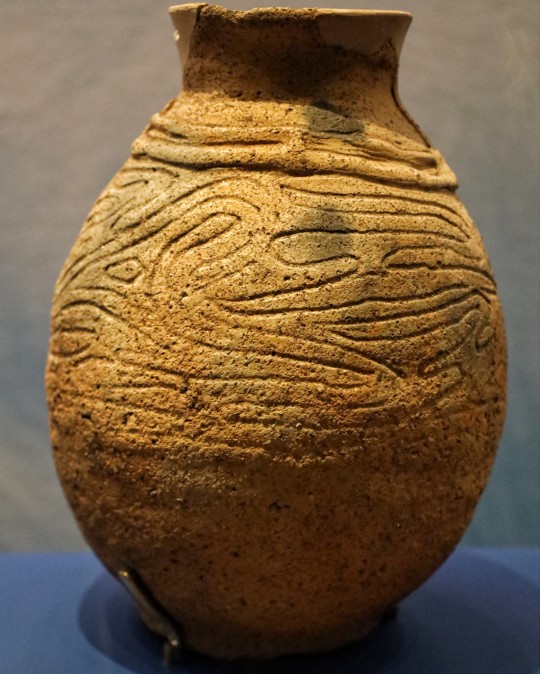
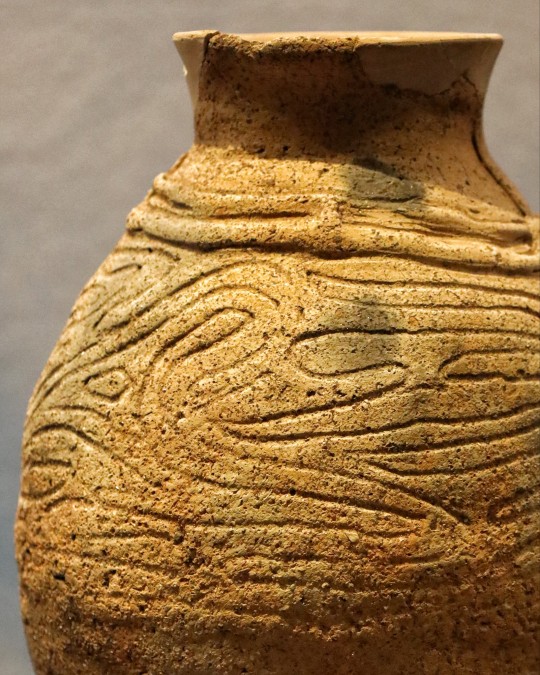

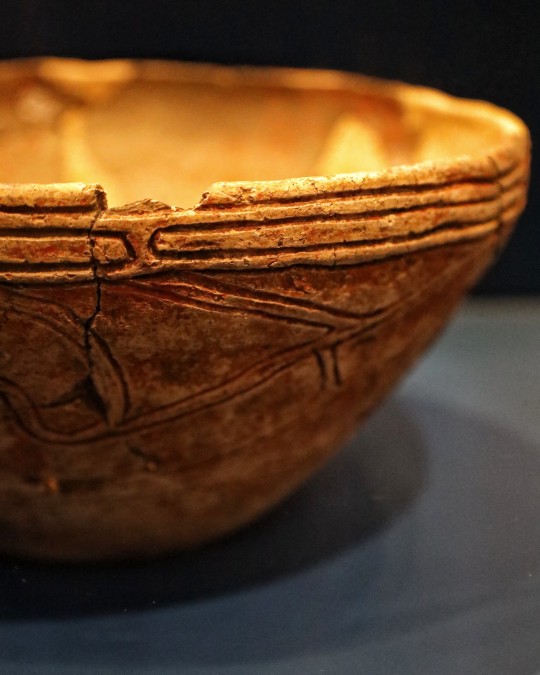
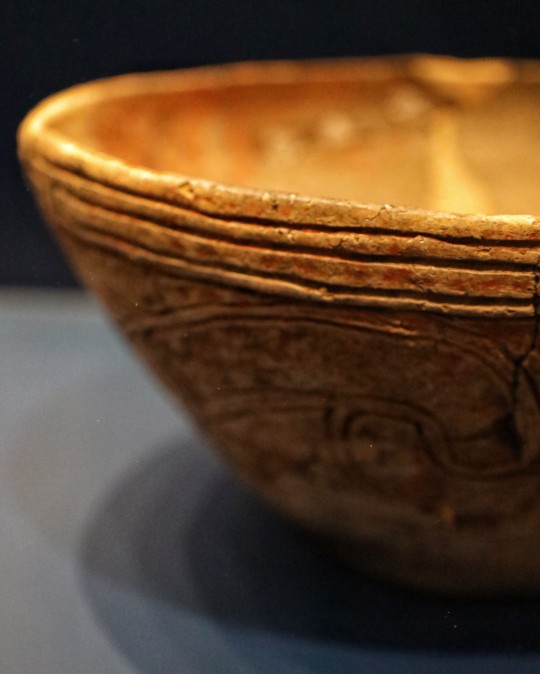
Middle Jomon Feasting, Ritual and Funerary Pottery, Japan, 5000 years old, 'Circles of Stone: Stonehenge and Prehistoric Japan' Exhibition, Stonehenge Visitor Centre, Wiltshire
#prehistoric#prehistory#prehistoric pottery#pottery#decorated pots#feasting#funerary art#Japan#japanese culture#Japanese art#archaeology#ancient cultures#ancient living#Stonehenge
123 notes
·
View notes
Text
#japan#japanese#history#japan history#history of japan#stone age#pre history of japan#japan stone age#paleolithic#japanese paleolithic#blog#culture#japaneseculture#anthropology#archeology#prehistoric#prehistory
0 notes
Text
Red Team Blues Chapter One, part two

My next novel, Red Team Blues, comes out on April 25. It’s an “anti-finance finance thriller,” a read-it-in-one-sitting thriller about a 67-year-old forensic accountant who gets embroiled in a deadly and violent cryptocurrency heist:
https://us.macmillan.com/books/9781250865847/red-team-blues
If you’d like an essay-formatted version of this post to read or share, here’s a link to it on pluralistic.net, my surveillance-free, ad-free, tracker-free blog:
https://pluralistic.net/2023/04/18/cursed-are-the-sausagemakers/#henched
To whet your appetite for it, I’m serializing chapter one, where we meet Marty Hench, and get introduced to the one last job that he needs to do to finish his 40 year career as Silicon Valley’s best high-tech forensic accountant.
Today, I’m publishing part two. Here’s the previous installment:
https://pluralistic.net/2023/04/17/have-you-tried-not-spying/#unsalted-hash
Here’s where US readers can pre-order the book:
https://us.macmillan.com/books/9781250865847/red-team-blues
Here’s pre-orders for Canadians:
https://services.raincoast.com/scripts/b2b.wsc/featured?hh_isbn=9781250865847&ht_orig_from=raincoast
And for readers in the UK and the rest of the Commonwealth:
https://uk.bookshop.org/p/books/red-team-blues-cory-doctorow/7225998?ean=9781804547755
And now, here’s today’s serial installment:
The Camino Real had excellent security, as well as all the amenities: a pool, a gym, and a set of spring-loaded seismic dampers set deep into the bedrock that turned the whole place into a bouncy castle whenever the San Andreas Fault got a touch of indigestion.
It was steps to California Avenue and five Michelin-star restaurants — one with three stars, two with two — and it cost him eight million, plus furnishings, which Sethu oversaw, going all in on Danish woods for a midcentury modern feel that went great with the rooftop garden that came with the penthouse unit. Sethu got him interested in trying all that Michelin star food, a far cry from ramen and slightly irregular breakfast cereals, and from there, it was the chefs’ tables, and then the private cooking classes, and then a major reno to the penthouse to fit it out with a kitchen that would have made Heston Blumenthal gasp and twirl.
They spent the month that the renos took in an exclusive lodge near a slightly active Costa Rican volcano, checking out the bromeliads and howler monkeys. He came back bronzed and fit from all that volcano hiking and became one of the great chefs of the new aristocracy, even pulling out the old alt.gourmand posts from the prehistory of Usenet. I don’t know when they became a couple, but I imagine it was a natural thing. Danny had a big heart, and he’d loved Galit with all of it, and with Galit gone and Danny still around, his heart wasn’t going to sit idly. Sethu is beautiful and brilliant and good at what she does, and those were all the traits that attracted Danny to Galit in the first place. The Camino Real’s security gave me the twice-over and then emitted me. The elevator doors gave a sophisticated sigh and welcomed me in, and the buttonless panel lit up PH, and my blood pooled a little in my feet as I attained liftoff.
Danny looked at least ten years younger than the last time I’d seen him, craggy but handsome, and the pounds he’d put on had only filled him out so he wasn’t such an ectomorphic scarecrow. He’d definitely been hitting the kettlebells, too, and his tight Japanese tee clung just enough that I could see he’d gotten some definition in his pecs and biceps. That’s hard muscle to acquire once you hit your fifties. Someone had been making Danny put in his reps.
Danny’s an intense guy who believed so fiercely in the significance and beauty and urgency of cryptography that he could easily captivate a roomful of people with an impromptu lecture on the subject, and he would not relinquish that hold until they all had to leave. He wasn’t a bore, but he wasn’t exactly normal, and yet as far as I knew, everyone who’d ever become personally acquainted with him liked him. A lot.
“Well, you don’t look like a man who got through a prix fixe at the Palmier. Even with the flights, you shouldn’t be that bilious, Mart. What’d you do, stop for Oreos on the way back to your double-wide?”
I let this pour over me as he showed me into the foyer and I shucked my scuffed old loafers, the ones I saved for personal days when I didn’t have to impress a client. “First of all, Lazer, the Unsalted Hash is a forty-foot, state-of-the-art touring bus with seven feet of internal clearance, an induction range, a deep freeze, and a sound system that can set off car alarms for a block. It is not a double-wide.
“Secondly, the Palmier was great, and I didn’t get the prix fixe — I got a taster at the chef’s table with a friend, and we stayed up later than we should have, and I still managed to drag myself here for a business conference at this unholy hour. I’m running on three hours’ sleep and digesting a good three- thousand-calorie dinner, is all.
“Finally, I don’t stop for Oreos, ever. I have a supply of 1995-vintage Hydroxes in one of the deep freezes. The original recipe contains all those great trans fats that make for excellent long-term frozen flavor and texture retention. I would offer you a package, but I won’t, because they are mine, and I treasure them beyond all reason and plan to make my stash last until I can no longer consume solid food, whereupon I plan to consume the balance in smoothie form.”
He took my shoes and tossed them into a closet and slammed the door, making a face, then burst out laughing and grabbed me in a bear hug that reminded me of those new biceps of his. “Man, it’s good to see you, Marty. Come in, come in. We’ll go out onto the roof.”
I got a quick tour of a lot of teak and curves and angles, like a set dresser had been given an unlimited budget to decorate the boss’s office on a midcentury period drama. Then he opened a sliding door out onto the roof-deck, which had some very nice landscaping and potted shrubs, a meandering stream patrolled by fat koi and fed by a two-foot waterfall, some comfortable- looking and elegant teak loungers, and Sethu.
She had an easel set up and was painting in oils, an impressionistic landscape of Palo Alto’s nimbified one-family houses and dinky main street. It was a couple of billion dollars’ worth of real estate dressed up as middle-class houses from the same midcentury dreamland as the furnishings in the living room. She turned and saw us and narrowed her eyes, just a tiny amount, before cleaning her brushes and hanging up her smock on the easel’s corner.
“Hi, hon,” she said. “This must be your friend Mr. Hench.” Danny beamed at her, an expression I remembered from his most successful demos, that prideful look he got when his code performed some miracle. “Marty, I don’t know if you ever met Sethu, back in the old days.”
“I don’t know that we were ever introduced properly,” I said. She’d let me in, once or twice, when I’d come by to see if I could pull Danny out of his tailspin. But she’d been his PA then.
“Well, in that case, Sethuramani Lazer, meet Martin Hench. Marty, meet Sethu.”
I’m pretty sure my facial expression didn’t change when he dropped that last name on me. I’d already noticed the rock on her finger, of course — a bachelor of my age and experience takes note of these things automatically, without conscious intervention. I’m pretty sure what Danny said next was that same pride speaking, not a failure of my poker face.
“Married her last year. Or rather, she married me, despite being significantly out of my league.”
“Lucky fella,” I said. “Congrats to both of you.”
He got us settled into loungers, and Sethu mentioned that she was going in for lemonade and offered us some. She brought it out in sweating tall glasses with silicone straws and then went back to her easel, far enough away that it wouldn’t seem odd not to include her in our conversation.
I sipped as Danny scrolled his phone for a moment, double-checked his notes, and took Sethu in. She was beautiful, of course, but I’d known that since I’d first met her at the door of that teardown that Danny had settled into as his final resting place. Now, though, she had the kind of haircut that some very bright topiarist had charged her at least a thousand bucks for, and with it, the kind of poise I associate with very beautiful, very accomplished women who are also very, very rich. Something in the posture, a kind of deep relaxation that you rarely see. Having a very deep cash buffer can give a woman the same tranquility as any middling specimen of manhood gets for free, the liberation from casual predation that men don’t even notice.
Danny put his phone down at last. “So I hear you did some work recently? Bonwick. Rearden Factoring?”
I nodded. “Yeah, Brian and I did some business, but it’s not the kind of thing I can discuss. You know that. He lost something, I found it, and I made him whole.” He snorted. “Marty, you don’t make people whole. Your commission still twenty-five percent?”
“It is,” I said. “And I still don’t charge anything to take a job, not even expenses or a retainer. I take the risk, I get the reward. That’s a proposition I think you probably relate to.”
“I’m familiar with the general idea.” He looked around at his penthouse garden, his beautiful young wife, his view of the strivers of Palo Alto and their Leave It to Beaver houses, all a testament to his willingness to take all the risk and his unwillingness to share his rewards. “You ever take payment in crypto?”
“I prefer fiat” — this being the cutesy word that crypto weirdos use for real money — “I have smart accountants who keep my tax bite down to a manageable slice, and I’ve got no other reason to accept distributed sudoku puzzles in lieu of greenbacks.”
“Very funny,” he said. Cryptocurrency hustlers hate it when you point out that the whole blockchain emits billions of tons of CO2 to help repeatedly compute pointless mathematical puzzles. “You’re familiar with how crypto works, though, right?”
“Danny, I love you like a brother, but I hope I’m not about to get a sales pitch for Trustlesscoin.” The only sour note in the previous night’s dinner had been a couple of bros at the chef’s table who spent the first hour talking about smart contracts. It was a hazard of any public space in SV, and I accepted it with good grace, but I wouldn’t tolerate it in private places. Life is too short.
“No pitch, but I just want to make sure you’re up to speed for what I’m going to tell you next. Forensic accounting is one thing, but when you throw in crypto, it’s a whole different world.”
Later this week (Apr 20/21), I’m speaking in Chicago at the Stigler Center’s Antitrust and Competition Conference.
This weekend (Apr 22/23), I’m at the LA Times Festival of Books.
[Image ID: A squared-off version of Will Staehle's cover for the Macmillan edition of 'Red Team Blues.']
#pluralistic#fiction#crypto#crypto means cryptography#red team blues#cryptocurrency#books#technothrillers#serials#martin hench
29 notes
·
View notes
Text
I can’t find my good drawing pencils.
I did however find my “the Past in Perspective: An Introduction to Human Prehistory” text book which I was looking for the other week. And my “Japanese Ink Painting: The Art of Sumí-e” which is great. My granny is a horrible bitch, but she understood the right kind of gift to give an anime loving, creative teen girl. Even if I don’t use the right medium for the art it’s intended for I still do use a lot of the basic techniques. On the bookshelf those go.
3 notes
·
View notes